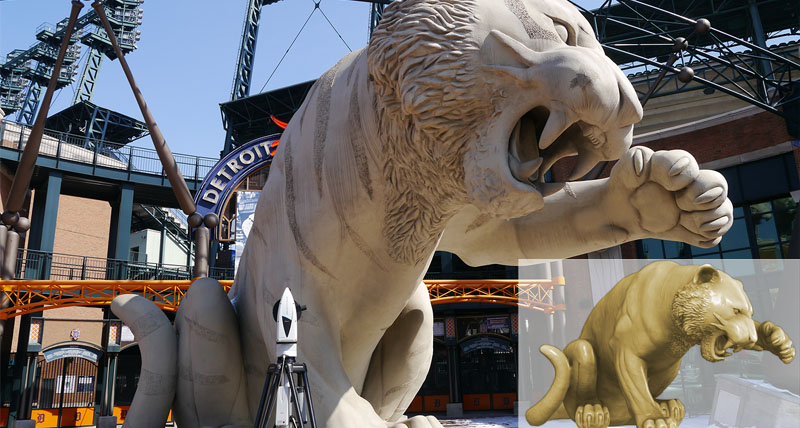Hexagon’s Manufacturing Intelligence division recently announced and demonstrated its new Leica Absolute Tracker ATS600 at RAPID + TCT 2019 in Detroit, MI.
The ATS600 is a new-to-market concept in metrology-grade laser trackers that can 3D scan a surface with metrological accuracy from a distance of up to 131.23 ft. without the need for targets, sprays, reflectors or probes. Ideal for large-scale projects, Hexagon specialists showed how difficult-to-reach surface features can be captured quickly and easily without the need for tracker repositioning. Surface areas that took hours in the past to manually scan can now be digitized in minutes for industrial production.
Hexagon also participated in the SME “3D in the D” Scanning event in Detroit, a project that engaged technology leaders to scan of objects of interest in Detroit from landmark sculptures to historic buildings.
One of Hexagon’s projects was to scan a large tiger sculpture at Comerica Park, home of the Detroit Tigers. The nine tiger sculptures guarding the stadium have an average height of 12 ft at the shoulder, with the largest at 15 ft. A video of the Tiger scan project and the resulting scan data from the ATS600 can be found HERE.  Hexagon’s Joel Martin, Product Manager of the Laser Tracker product line, presented “Laser Scanning from Macro to Micro: What to Use”. He detailed the diverse landscape of scanning challenges to ultimately produce a 3D point cloud of the tiger sculpture. This informative session gave attendees a hands-on opportunity to address the larger question of “what scanning technology should I use and why?”
Hexagon’s Joel Martin, Product Manager of the Laser Tracker product line, presented “Laser Scanning from Macro to Micro: What to Use”. He detailed the diverse landscape of scanning challenges to ultimately produce a 3D point cloud of the tiger sculpture. This informative session gave attendees a hands-on opportunity to address the larger question of “what scanning technology should I use and why?”
In Martin’s presentation, he shared his experiences covering a range of technologies used to scan items of varying size and detail from a modern-day production vehicle to the Michigan Central Station, a former, historic intercity passenger rail depot in Detroit. He highlighted why each scan was performed with the corresponding technology, and expanded into other potential solutions that could have been utilized for the tasks at hand. The presentation shed light on why different scanning solutions exist, the when and why they should used, and the end result of each scanning technology.


